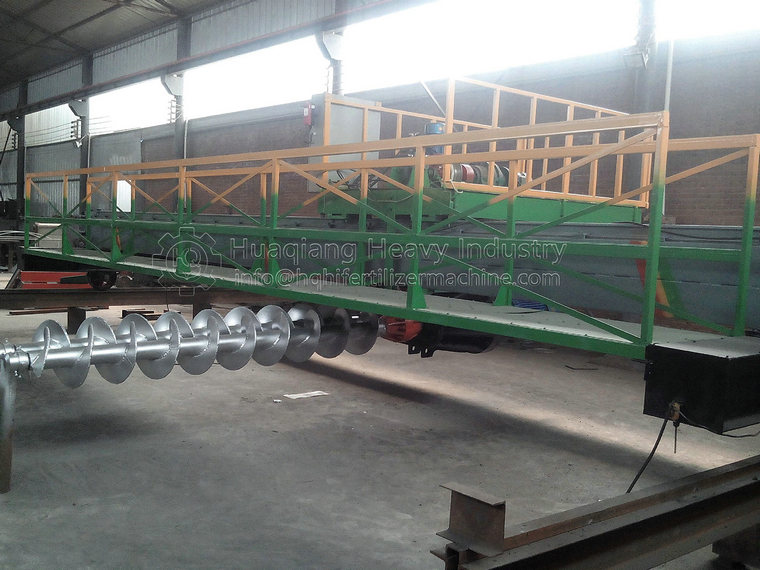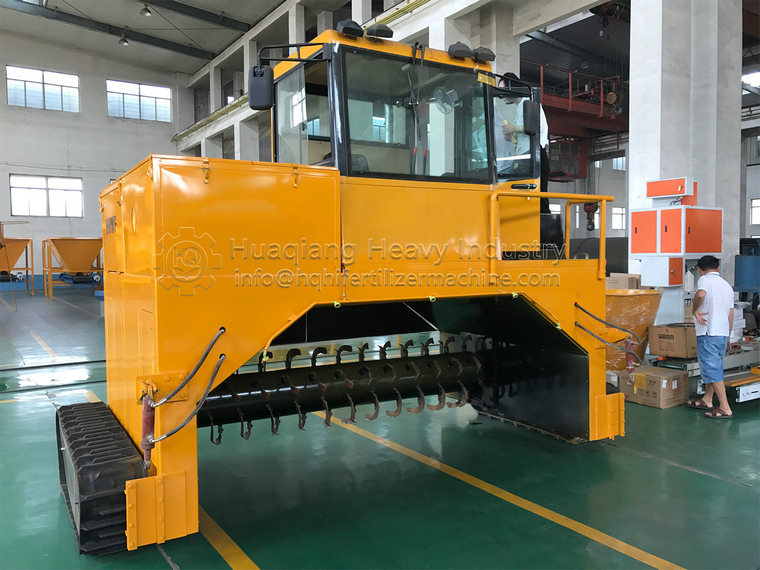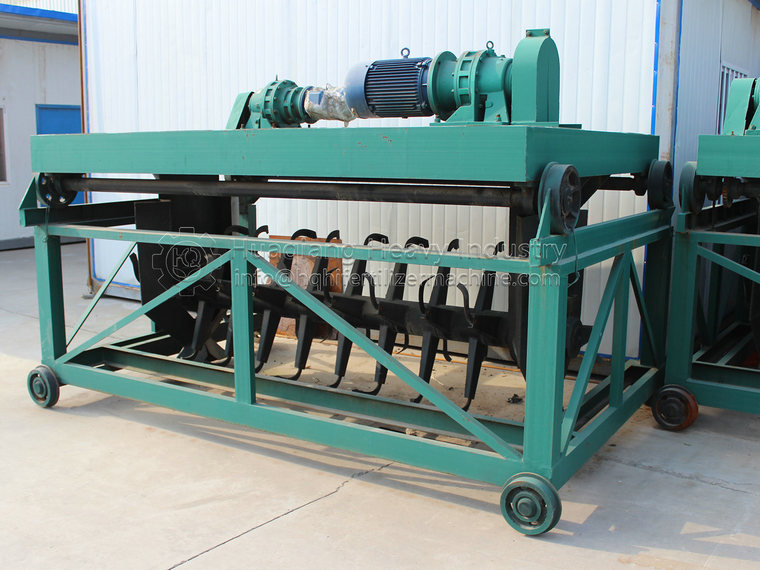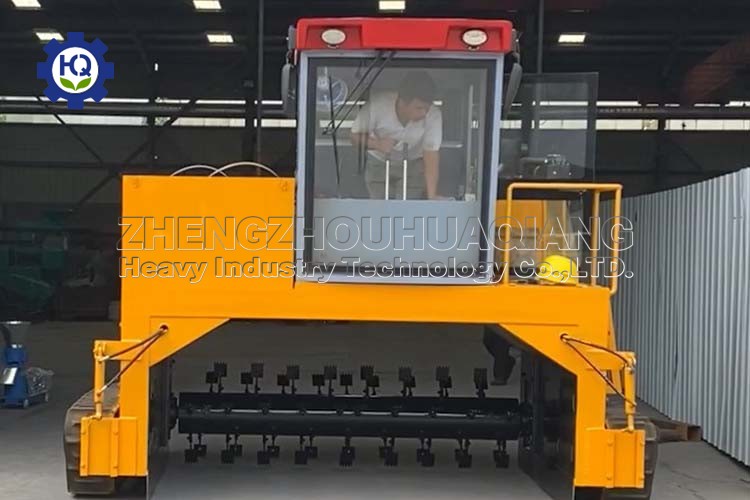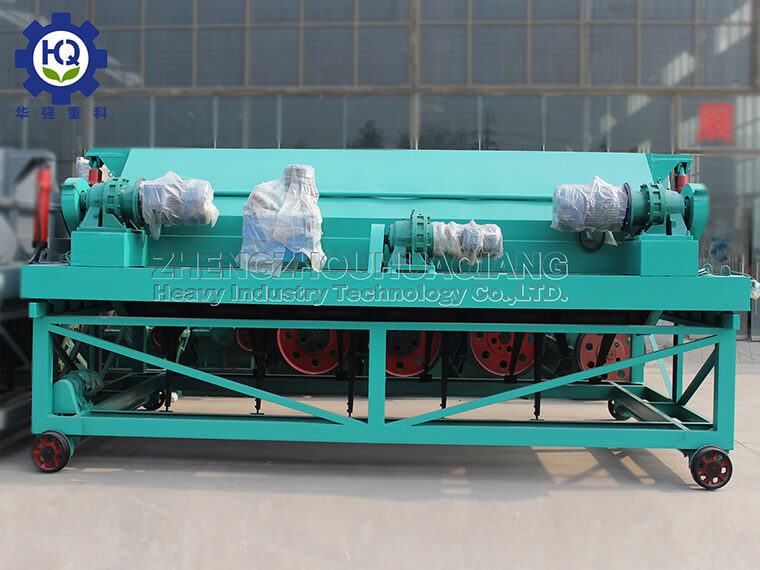Chain plate organic fertilizer turning machine is a commonly used equipment in organic fertilizer production. Its unique design and working principle can efficiently complete the turning operation of organic materials and promote the fermentation process of organic fertilizers.
The chain plate organic fertilizer turning machine is mainly composed of a frame, a chain plate transmission system, turning components, a power system, and a control system.
The power system is the “heart” of the entire equipment operation. Usually powered by an electric motor, the motor starts running after being connected to the power source, converting electrical energy into mechanical energy. The power of the motor is transmitted to the reducer through a coupling or belt transmission device. The function of a reducer is to reduce the output speed of the motor while increasing the torque, making the power more suitable for the working needs of subsequent components of the equipment. The power processed by the reducer is ultimately transmitted to the chain plate transmission system.
The chain plate transmission system is a key component of this equipment. It consists of a driving sprocket, a driven sprocket, and a chain plate wrapped around them. After the power is transmitted to the drive sprocket, the drive sprocket begins to rotate, driving the chain plate to make a circular motion. The chain plate moves along a specific track during operation, and the design of this track allows the chain plate to be close to the organic material pile. The surface of the chain plate is usually designed with special patterns or protrusions to better grasp and transport materials during operation.
The flipping component is installed on the chain plate and works with the cyclic movement of the chain plate. The flipping component is generally composed of multiple flipping teeth or scrapers. When the chain plate with the flipping component passes through the material pile, the flipping teeth or scraper are inserted into the material pile to flip and disperse the material. The continuous movement of the chain plate causes materials at different positions to be constantly flipped and mixed. The materials that were originally at the bottom are carried to the upper layer, while the materials at the upper layer are mixed into the lower layer, thus achieving full transposition and uniform mixing of the materials.
The control system is responsible for precise regulation of the operation of the equipment. The operator can control the start, stop, and speed of the motor through the console, thereby adjusting the operating speed and flipping frequency of the chain plate. Some advanced control systems also have automation functions, which can automatically complete specific time and frequency of flipping operations based on preset parameters, greatly improving production efficiency and management convenience.
The chain plate organic fertilizer turning machine achieves efficient and orderly turning of organic materials through the coordinated operation of various parts, using the chain plate transmission system to drive the turning components, providing strong guarantees for the high-quality production of organic fertilizers.


